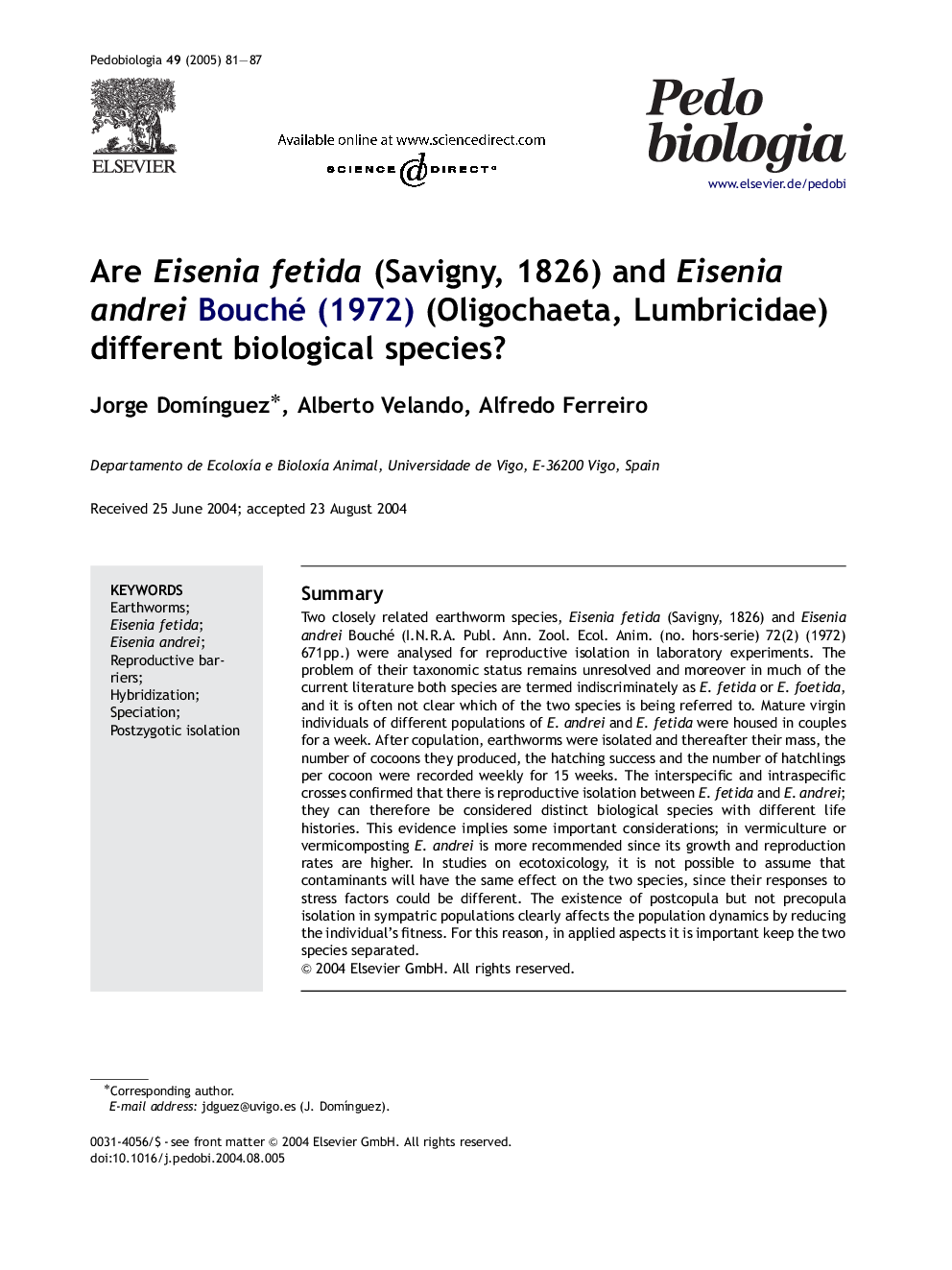| Article ID | Journal | Published Year | Pages | File Type |
|---|---|---|---|---|
| 10878725 | Pedobiologia | 2005 | 7 Pages |
Abstract
Two closely related earthworm species, Eisenia fetida (Savigny, 1826) and Eisenia andrei Bouché (I.N.R.A. Publ. Ann. Zool. Ecol. Anim. (no. hors-serie) 72(2) (1972) 671pp.) were analysed for reproductive isolation in laboratory experiments. The problem of their taxonomic status remains unresolved and moreover in much of the current literature both species are termed indiscriminately as E. fetida or E. foetida, and it is often not clear which of the two species is being referred to. Mature virgin individuals of different populations of E. andrei and E. fetida were housed in couples for a week. After copulation, earthworms were isolated and thereafter their mass, the number of cocoons they produced, the hatching success and the number of hatchlings per cocoon were recorded weekly for 15 weeks. The interspecific and intraspecific crosses confirmed that there is reproductive isolation between E. fetida and E. andrei; they can therefore be considered distinct biological species with different life histories. This evidence implies some important considerations; in vermiculture or vermicomposting E. andrei is more recommended since its growth and reproduction rates are higher. In studies on ecotoxicology, it is not possible to assume that contaminants will have the same effect on the two species, since their responses to stress factors could be different. The existence of postcopula but not precopula isolation in sympatric populations clearly affects the population dynamics by reducing the individual's fitness. For this reason, in applied aspects it is important keep the two species separated.
Related Topics
Life Sciences
Agricultural and Biological Sciences
Animal Science and Zoology
Authors
Jorge DomÃnguez, Alberto Velando, Alfredo Ferreiro,
